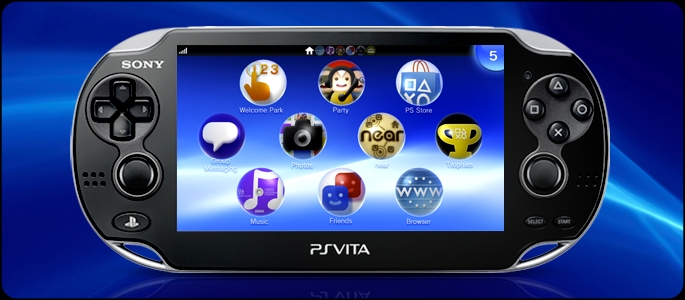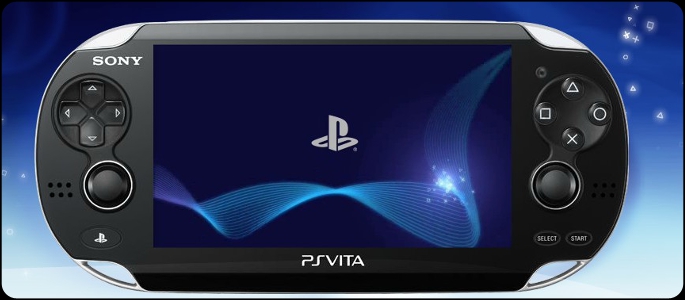
3. What’s your reaction to Sony openly embracing varied pricing for Vita’s software ($9.99 to $49.99)? Many publishers and developers have been calling for this to happen for a while now. Is Vita the first console of many that will embrace varied pricing structures?
ANTHONY: We’re already seeing a variety of pricing models for Vita games. Not only at retail, but digital counterparts are cheaper. This is something consumers have wanted and I think it can only be a good thing. It’s good for the publishers, too.
SEBASTIAN: Varied pricing is the natural evolution of any industry that provides wildly different products. Why should you pay the same amount for a 5-hour game as a 50-hour one?
But two things impede widespread use of varied pricing structures:
1) Consumer confusion – Sadly, as THQ realized when they sold some games for less, some consumers automatically believe that cheaper games are either older or discounted because they aren’t popular — neither of which are very attractive to shoppers.
2) Publisher hesitation – If a publisher can charge consumers $60 for a game and people buy it, then publishers will sell the game for $60. Sure, there’s a chance a reduced price will increase the number of sales, but it’s a big risk for a multi-million dollar project that most publishers don’t want to take.
CAMERON: I am in love with the staggered pricing on the Vita’s software lineup. This is a great way for publishers and developers who think their game might not sell at $49.99 to enter at a much friendly price point for their target audience. It also gives consumers plenty of options, such as picking up two Vita games for the price of one PS3 game. That’s something that should hopefully boost software sales, specifically at launch.
HEATH: Only thing I can say for sure is that I love it.
NICK: Varied pricing structure for software has been needed by the video game industry for a while now. One price ($50 or $60) for every game is just too much for consumers to afford. More pricing options aren’t just good for consumers, though — publishers and developers don’t have to worry about their game competing with other major games in the market available at the same price. Flexibility in pricing for games is a smart move and if the Vita is successful with it, don’t be surprised if it spreads to home console games in the following generation.
4. Speaking of varied pricing structure, Vita’s games will cost a maximum of $49.99, which is just $10 short of the price of full console games. What, in your opinion, does a $49.99 handheld game have to include to be worth such a price? Does a $49.99 software price for handheld games prove that console manufacturers are out of touch with what’s going on with Apple and the success of the pricing on their iOS systems?
ANTHONY: If you had asked me this a month ago, I’d probably have said $49.99 is too much for any handheld game. But then I played Uncharted: Golden Abyss and saw that it is more on par with AAA console games. In fact, it is more worth the $49.99 price tag than more than half of the PS3 titles I’ve seen going for the full $59.99 price tag. It really depends on the game. As for the iOS games being so cheap, I’m a strong believer in you get what you pay for. If you pay $0.99, then don’t expect much. If you pay $49.99, then you have every right to expect one hell of an experience. Most iOS games are great for a few minutes here and there. There’s a place for that and a place for “real” games as well. That said, I think Rovio could have charged more for Angry Birds, which is even free most of the time. That is just crazy. I love them for it, but I don’t understand it. Then again, it may not have had the same success if there was a $4.99 price tag attached to it.
SEBASTIAN: I just finished playing Uncharted on my Vita. It’s Uncharted, but on a smaller screen — nothing has been taken out. For games like this, it’s fair to charge that much, but the question Sony needs to consider is whether or not consumers really know it’s fair.
On the consumer side, Sony has to push that you can get $0.99 games on PSN: you can get Angry Birds, you can get PS Minis, etc. They also need to show off their big games as well, and prove to people why these games cost so much.
On the developer side, Sony has to push for smaller developers, so that they can sell cheap games. The problem is: a) There’s hundreds of millions of iOS devices, with iProducts only getting more popular, while the Vita is an unknown quantity, and b) iOS dev kits cost $99, while Vita ones cost over $2000. It’s hard for small studios to choose to develop Vita games.
It can’t be like on the 3DS, where games like Cut The Rope cost far, far more than iOS games.
CAMERON: I think we shouldn’t go and try to compare what type of game will release at $49.99 on the Vita and something that would release on an Apple product. Obviously, a game at that price on the Vita needs to have a good deal of depth and I would think needs to have a good following already behind it as well. Uncharted can get away with a higher price point because of the strength of previous titles in the Uncharted series and the depth that Golden Abyss provides gamers on a handheld. I think that if the game provides a great experience, there will be enough of a market for it at the $49.99 price. If not, the game can be priced lower, but you get what you pay for.
HEATH: The type of person who would care to buy a Vita is the type of person who realizes that, for the most part, these are console-quality games. I think they’ll understand the cost.
NICK: $50 is quite a significant price for any video game — let alone a handheld game — and seeing the price possibly becoming a trend (Uncharted: GA, RE: Revelations) is worrying. Consumers in the handheld market probably aren’t ready to pay $50 for handheld games, so publishers and developers need to reserve that price as a rarity that would only be used for their biggest AAA efforts in the handheld market. A handheld game that costs $50 should include: AAA production values, high quality gameplay, and online multiplayer. If the game doesn’t have online multiplayer, then it should offer a Skyrim or GTA-like number of hours of gameplay.
As for Apple and iOS pricing, I don’t know if Apple’s success proves that console manufacturers are out of touch, because the pricing of software — to an extent — is relative, due to the differences between the platforms and the expectations of the audiences. However, the availability of software for much more affordable prices on a popular platform is something that both Sony and Nintendo need to be aware of, and both should continue to pursue measures like varied pricing structures to keep consumers satisfied.








